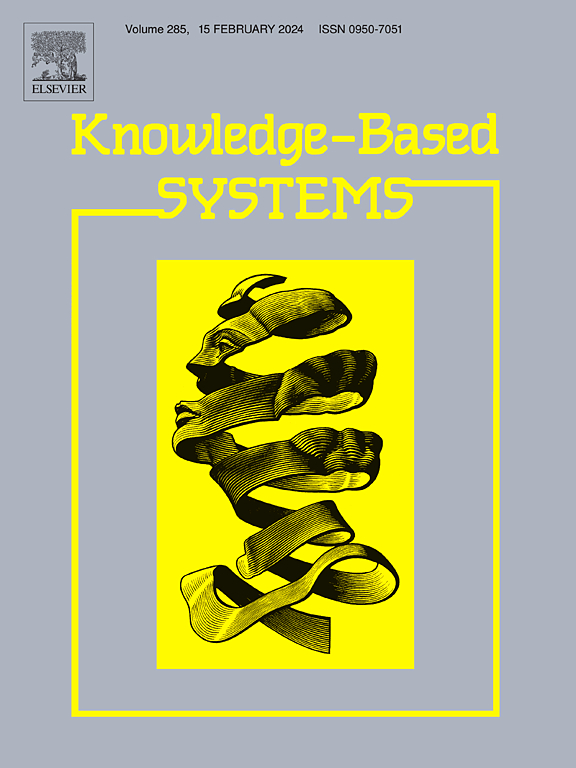Dual De-confounded Causal Intervention method for knowledge graph error detection
IF 7.2
1区 计算机科学
Q1 COMPUTER SCIENCE, ARTIFICIAL INTELLIGENCE
引用次数: 0
Abstract
Due to the Knowledge Graph (KG) construction process, erroneous triples are virtually inevitable to be introduced into real-world KGs. Since these errors hinder the expressiveness and applicability of KGs, the development of knowledge graph error detection (KGED) methods is necessary. Despite the overall effectiveness of current KGED methods, their capacity to identify challenging errors is limited. In this work, we conduct empirical studies and find that previous works introduce structural and semantic bias, impeding the identification of erroneous triples, especially in challenging cases. To address this issue, we design a causal graph for the KGED task and propose a Dual De-confounded Causal Intervention (DuDCI) method for debiasing. Firstly, DuDCI utilizes the neighborhood and textual descriptions of triples to calculate their graph and text embeddings. Next, a Causal De-confounded Module is constructed to mitigate the impact of shortcuts caused by the bias through the front-door adjustment. Furthermore, we introduce Disentanglement Constraints to disentangle the information expressed by each embedding, thereby facilitating further bias mitigation. Experimental results on three widely used KGED datasets validate the effectiveness of DuDCI and demonstrate that DuDCI outperforms current KGED methods, with an improvement of at least 2.2%, especially in more challenging noise scenarios.
用于知识图谱错误检测的双重去混淆因果干预方法
由于知识图谱(KG)的构建过程,在现实世界的知识图谱中几乎不可避免地会引入错误的三元组。由于这些错误阻碍了知识图谱的表达能力和适用性,因此有必要开发知识图谱错误检测(KGED)方法。尽管目前的知识图谱错误检测(KGED)方法总体上很有效,但它们识别高难度错误的能力有限。在这项工作中,我们进行了实证研究,发现以前的工作引入了结构和语义偏差,阻碍了错误三元组的识别,尤其是在具有挑战性的情况下。为了解决这个问题,我们为 KGED 任务设计了一个因果图,并提出了一种用于除错的双重去混淆因果干预(DuDCI)方法。首先,DuDCI 利用三元组的邻域和文本描述来计算它们的图嵌入和文本嵌入。然后,构建因果去混淆模块,通过前门调整来减轻偏差造成的捷径影响。此外,我们还引入了 "分解约束"(Disentanglement Constraints)来分解每个嵌入所表达的信息,从而进一步减轻偏差。在三个广泛使用的 KGED 数据集上的实验结果验证了 DuDCI 的有效性,并证明 DuDCI 优于当前的 KGED 方法,至少提高了 2.2%,尤其是在更具挑战性的噪声场景中。
本文章由计算机程序翻译,如有差异,请以英文原文为准。
求助全文
约1分钟内获得全文
求助全文
来源期刊

Knowledge-Based Systems
工程技术-计算机:人工智能
CiteScore
14.80
自引率
12.50%
发文量
1245
审稿时长
7.8 months
期刊介绍:
Knowledge-Based Systems, an international and interdisciplinary journal in artificial intelligence, publishes original, innovative, and creative research results in the field. It focuses on knowledge-based and other artificial intelligence techniques-based systems. The journal aims to support human prediction and decision-making through data science and computation techniques, provide a balanced coverage of theory and practical study, and encourage the development and implementation of knowledge-based intelligence models, methods, systems, and software tools. Applications in business, government, education, engineering, and healthcare are emphasized.
 求助内容:
求助内容: 应助结果提醒方式:
应助结果提醒方式:


